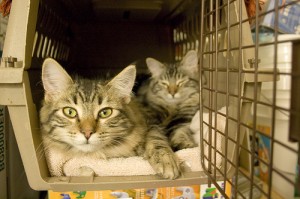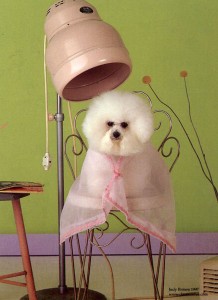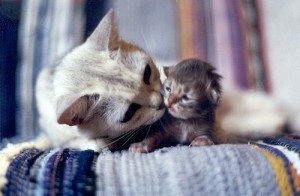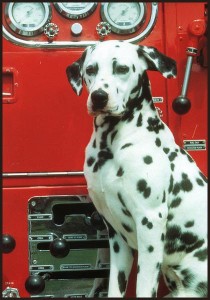Archive for August, 2011
How old does a kitten have to be before you can adopt it?
 Most kittens will be able to leave their mothers between 8 and 10 weeks old. Kittens must never be removed from their mother in the first three to four weeks of their lives. During this period, the kittens relay solely on their mothers milk for nutrition. They must be totally weaned from the milk before they could become a healthy cat. Once they are weaned, they will eat cat food and rely on that for all of their nutrition. At this point, they no longer need to be given milk. Milk can upset their digestive system.
Most kittens will be able to leave their mothers between 8 and 10 weeks old. Kittens must never be removed from their mother in the first three to four weeks of their lives. During this period, the kittens relay solely on their mothers milk for nutrition. They must be totally weaned from the milk before they could become a healthy cat. Once they are weaned, they will eat cat food and rely on that for all of their nutrition. At this point, they no longer need to be given milk. Milk can upset their digestive system.
If you remove kittens from their mother too early, they can have health problems later in life. Some experts say that once the kitten is weaned, they can then be given up for adoption. Other experts say that it’s better to leave the kittens with their mother up to twelve weeks to help them develop important life skills by socializing.
Make sure your kitten’s diet is a healthy one. When they are over 12 weeks, you may want to sneak in a treat every now and then. Remember, your pets count!
Travelling by car with your cat
 If you are going on a trip and are taking your cat with you, here are some things to remember if you’re going by car. It can be dangerous to leave your cat loose in the car. They can cause an accident by getting under the drivers feet or escape and become lost if a window or door is open. You will need to invest in a sturdy cat carrier which will be much safer for you and your cat. Make sure that the carrier is easy to clean in the event that your cat urinates during the trip. Avoid cardboard or very cheap carriers. There’s nothing worse than a frightened cat getting loose while you’re behind the wheel! Make sure that the carrier has good air flow. Keep your cat in the back seat if possible. My younger cat, Millie doesn’t like to be left in the back seat. I’ll be travelling with her and my older cat, Mollie tomorrow. I’ll place Millie’s carrier in the front seat (not my preference, but hers) and strap the seat belt around it.
If you are going on a trip and are taking your cat with you, here are some things to remember if you’re going by car. It can be dangerous to leave your cat loose in the car. They can cause an accident by getting under the drivers feet or escape and become lost if a window or door is open. You will need to invest in a sturdy cat carrier which will be much safer for you and your cat. Make sure that the carrier is easy to clean in the event that your cat urinates during the trip. Avoid cardboard or very cheap carriers. There’s nothing worse than a frightened cat getting loose while you’re behind the wheel! Make sure that the carrier has good air flow. Keep your cat in the back seat if possible. My younger cat, Millie doesn’t like to be left in the back seat. I’ll be travelling with her and my older cat, Mollie tomorrow. I’ll place Millie’s carrier in the front seat (not my preference, but hers) and strap the seat belt around it.
Never leave your cat in the car alone in the hot sun. We spoke of how fast the temperature rises in previous posts. Be careful and pay attention. Don’t leave doors open even if the cat is in her carrier!
Have a safe trip with your pet. Remember your pets count!
Some questions to ask when choosing a dog groomer.
 If your dog has long hair and if you don’t have time to give him regular baths, you may want to take him to a groomer on a regular basis. When choosing a groomer, first ask about their experience.
If your dog has long hair and if you don’t have time to give him regular baths, you may want to take him to a groomer on a regular basis. When choosing a groomer, first ask about their experience.
- How long have they been in the dog grooming business?
- What kind of training did they receive? Are they certified by NDGAA or another organization?
- Do they specialize in any breed size or particular breed of dog? Are there any restrictions on the types of dogs they work with?
- Do they use a hand held dryer or a cage dryer? (I would prefer a hand held). If they do use a cage dryer, find out if someone always stays with the dogs. If they don’t, I would go elsewhere.
- Do they sedate the dogs for grooming? If so, who does it and what type of training do they have?
- Where do they keep the dogs when they’re not being groomed or waiting to be groomed?
- What happens in an emergency or if your dog is injured? Is there a veterinarian on call or does someone have first aid training?
- How is their record keeping? Do they keep complete records like medical, vaccinations and grooming history?
How to tell if your cat’s in heat
 It’s pretty easy to tell whether or not your cat’s in heat. The first sign is that they become overly affectionate. They’ll rub their rear, head and neck against you and lots of other objects. The tell tale sign is that your cat will produce a loud long howling sound. This is to let the male cats know that she is in heat and that she is ready to mate. The howling continues until she mates. Your cat will also bend her body in a mating position with her rear raised and her tail in the air. She will tread around in the same place in this position. She’ll lift her tail and spray urine on various objects like walls, doors and furniture. The odor is much stronger that regular cat urine odor. This urine contains more estrogen and also lets other male cats know that she’s in heat. If your cat displays these signs, then she’s in heat but don’t prepare that special place or cat bed for the new arrivals just yet. A cat is pregnant for about 65 days. Remember, your pets count!
It’s pretty easy to tell whether or not your cat’s in heat. The first sign is that they become overly affectionate. They’ll rub their rear, head and neck against you and lots of other objects. The tell tale sign is that your cat will produce a loud long howling sound. This is to let the male cats know that she is in heat and that she is ready to mate. The howling continues until she mates. Your cat will also bend her body in a mating position with her rear raised and her tail in the air. She will tread around in the same place in this position. She’ll lift her tail and spray urine on various objects like walls, doors and furniture. The odor is much stronger that regular cat urine odor. This urine contains more estrogen and also lets other male cats know that she’s in heat. If your cat displays these signs, then she’s in heat but don’t prepare that special place or cat bed for the new arrivals just yet. A cat is pregnant for about 65 days. Remember, your pets count!
Spotted dogs
 Dalmatians are iconic breeds. They were made very popular by the movie 101 Dalmatians. They’re also known for being firehouse mascots. Have you ever seen one riding on a fire truck at a 4th of July parade? There is a reason why Dalmatians are associated with firefighters. Back in the days of horse drawn carriages, they used to run in front of the carriages to clear a path. Their hard work legacy has endured over the years. This is a high energy breed that do well with an active family. Lots of exercise with dog toys that they could run after and fetch is best. Before committing to one of these beautiful dogs, consider your schedule. Make sure you have the time to spend and are up to giving him lots of exercise. Remember your pets count!
Dalmatians are iconic breeds. They were made very popular by the movie 101 Dalmatians. They’re also known for being firehouse mascots. Have you ever seen one riding on a fire truck at a 4th of July parade? There is a reason why Dalmatians are associated with firefighters. Back in the days of horse drawn carriages, they used to run in front of the carriages to clear a path. Their hard work legacy has endured over the years. This is a high energy breed that do well with an active family. Lots of exercise with dog toys that they could run after and fetch is best. Before committing to one of these beautiful dogs, consider your schedule. Make sure you have the time to spend and are up to giving him lots of exercise. Remember your pets count!